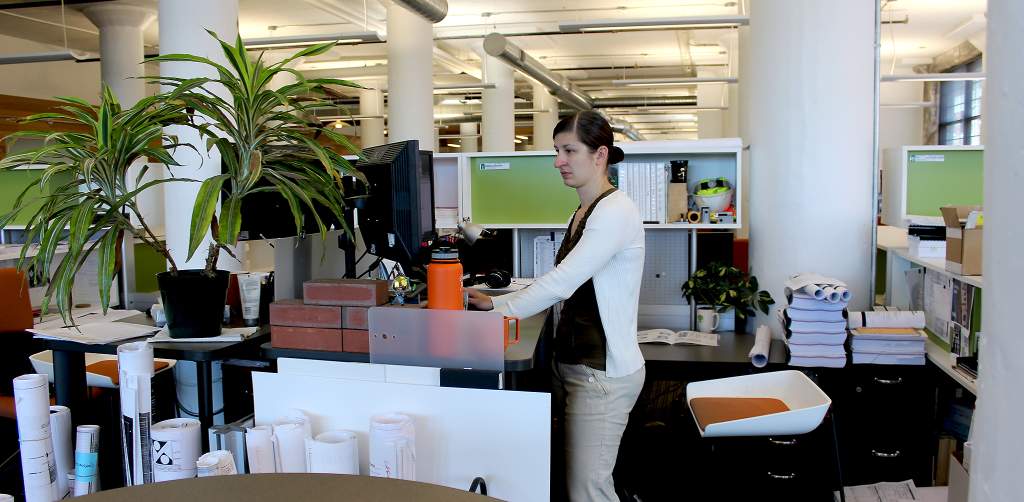Sitting vs. Standing at Your Desk
June 29, 2015
Doing work at a computer or desk generally requires us to sit. But how can we avoid the health risks of sitting all day, while still managing to get work done? The solution could be a standing desk.
Many of us are well aware of the negative effects of sitting down for most of the day. Some studies show that being overly sedentary can lead to problems such as back pain, obesity, and at the very least, sluggishness. A sedentary lifestyle is even thought to contribute to an increased risk of type 2 diabetes, cancer and cardio-vascular diseases. Because many of us have jobs that require that we sit still for most of the day in order to get work done, we often try to counter the negative effects by hitting the gym after work. Although going to the gym is a great habit, sometimes it is just not enough to counter the effects of the 5 or more hours we spend sitting each day.
Sitting in a regular office chair allows most of your muscles to relax which can make us very tired-both mentally and physically. Standing at your desk, on the other hand burns almost 50 calories more per hour than sitting does. It also encourages movement in general, motivating us to walk around more often. Standing while we work engages our muscles and keeps our brains active, which suggests that it could enhance productivity and creative thinking.
Given all the dangers of sitting, several employees in Watts’ architecture department, including Rebecca Bortolin, decided it was time to make a change. Rebecca no longer sits in a computer chair while she works; instead she uses a much taller desk that allows her to stand in front of her computer while she works. Although she keeps a tall stool behind her to lean back on, she spends most of her day standing. Other Watts employees also use convertible desks which can be adjusted for standing or sitting. Since she started standing at work, Rebecca has noticed that her back problems have almost disappeared. In addition, it has made her more attentive and focused on each task.
When weighing the benefits of a standing desk some may worry that being on your feet all day would cause foot pain, back pain or fatigue. Although this was not the case for Rebecca, some sources do recommend having a high chair available so you can alternate between sitting and standing. It is also important to be aware of your footwear and how you stand to avoid straining your legs and feet.
For some people, standing desks can be a great option. However, they are certainly not a good idea for everyone. Some of us cannot reasonably stand for the majority of the day due to health concerns or other restrictions. Fortunately, increasing movement in small ways throughout the day may be the best solution.
To improve your health and focus while at work, consider adding these habits to your daily routine:
- Take a walk outside during your lunch break.
- Walk over to people’s desk instead of emailing or calling them.
- Stand up every 20-30 minutes to stretch, get some water etc.
- Remember to sit up straight at your desk, avoid slouching.
Sources:
http://www.smithsonianmag.com/science-nature/five-health-benefits-standing-desks-180950259/?no-ist
http://www.rd.com/health/stand-and-deliver-the-benefits-of-standing-at-your-desk/
http://www.fastcompany.com/3035367/work-smart/a-users-guide-to-standing-while-you-work
